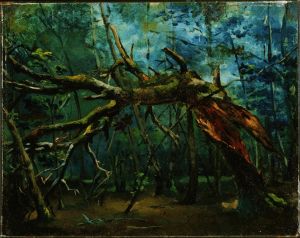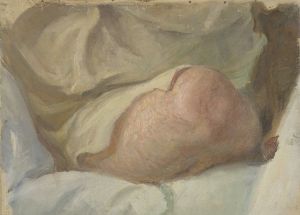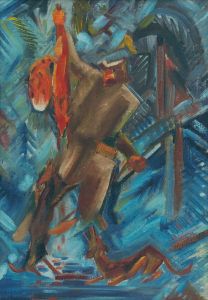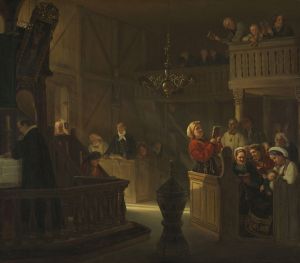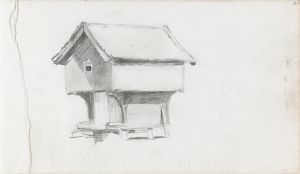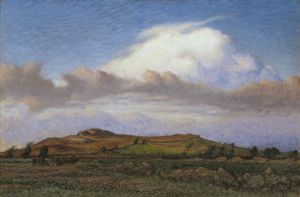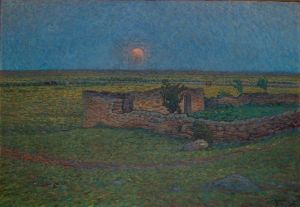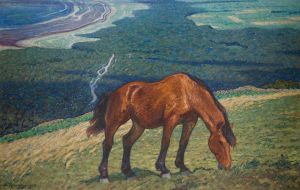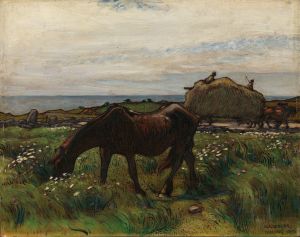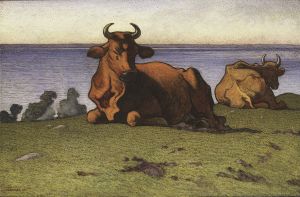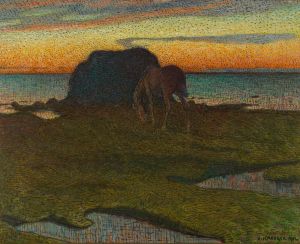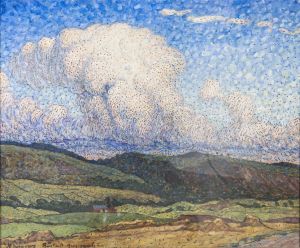
Landscape
A hand-painted replica of Nils Kreuger’s masterpiece Landscape, meticulously crafted by professional artists to capture the true essence of the original. Each piece is created with museum-quality canvas and rare mineral pigments, carefully painted by experienced artists with delicate brushstrokes and rich, layered colors to perfectly recreate the texture of the original artwork. Unlike machine-printed reproductions, this hand-painted version brings the painting to life, infused with the artist’s emotions and skill in every stroke. Whether for personal collection or home decoration, it instantly elevates the artistic atmosphere of any space.
Nils Kreuger, a prominent Swedish painter, is celebrated for his contributions to the landscape genre, particularly during the late 19th and early 20th centuries. His work "Landscape" exemplifies his distinctive style and artistic vision, which were heavily influenced by the natural beauty of Sweden and the broader Scandinavian environment.
Born in 1858 in Kalmar, Sweden, Kreuger initially studied at the Royal Swedish Academy of Arts in Stockholm. However, he soon became disenchanted with the traditional methods taught there and sought inspiration elsewhere. This led him to Paris in the 1880s, where he was exposed to the burgeoning Impressionist movement. The influence of Impressionism is evident in Kreuger's work, particularly in his use of light and color to capture the essence of the natural world.
"Landscape" is a testament to Kreuger's ability to blend Impressionist techniques with his unique perspective on the Swedish countryside. The painting likely features the rolling hills, expansive skies, and serene vistas that are characteristic of his work. Kreuger was known for his ability to convey the changing seasons and the transient effects of light on the landscape, often painting en plein air to capture the immediacy of the scene.
Upon returning to Sweden, Kreuger became associated with the Varberg School, a group of artists who were instrumental in the development of Swedish modernism. This group, which included artists such as Richard Bergh and Karl Nordström, sought to break away from academic traditions and explore new ways of representing the natural world. Kreuger's "Landscape" reflects this innovative spirit, as he experimented with composition and color to create a dynamic and emotive portrayal of the environment.
Kreuger's landscapes are noted for their atmospheric quality, achieved through a careful balance of color and form. He often employed a muted palette, using subtle gradations of tone to evoke the mood of the scene. This approach allows the viewer to experience the tranquility and majesty of the Swedish landscape, as Kreuger intended.
In addition to his technical skill, Kreuger's work is imbued with a deep appreciation for nature. His landscapes are not mere representations of the physical world but are infused with a sense of place and emotion. This connection to the land is a hallmark of Kreuger's art and is particularly evident in "Landscape," where the viewer is invited to contemplate the beauty and serenity of the natural world.
Throughout his career, Kreuger remained committed to exploring the possibilities of landscape painting. His work has been exhibited widely and continues to be celebrated for its contribution to Swedish art. "Landscape" stands as a testament to Kreuger's enduring legacy and his ability to capture the essence of the natural world with sensitivity and insight.
In summary, Nils Kreuger's "Landscape" is a significant work that reflects the artist's mastery of the landscape genre and his innovative approach to painting. Through his use of light, color, and composition, Kreuger invites viewers to experience the beauty and tranquility of the Swedish countryside, making his work an enduring part of the Scandinavian artistic tradition.





